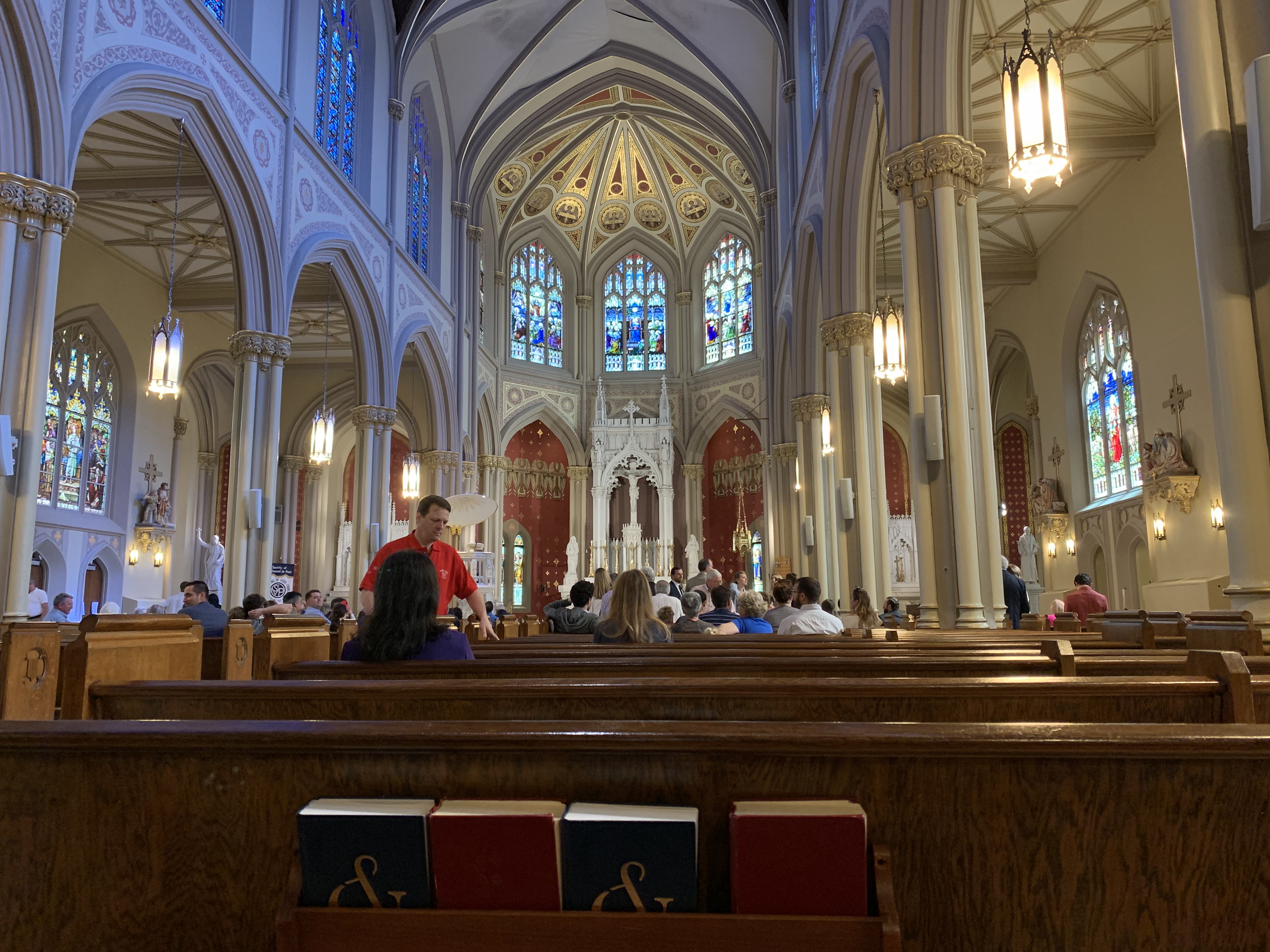
Holy Name of Jesus Church in New Orleans. (Photo by: Rayna Recht)
I attended mass at the Holy Name of Jesus Church in New Orleans this past month. As a Jewish individual that was raised attending synagogue every Saturday morning, I was anxious and excited to experience a Catholic prayer service.
When I first entered the church, I was met with a beautiful sight. I entered a large room filled with pews, candles, stained glass, and artwork. I made my way to a pew sat down. The members around me introduced themselves and welcomed me to their place of prayer. I was shocked to have such an immediate welcome into this community that is foreign to me. I didn’t grow up attending mass; I grew up attending temple and there are these connections and differences that started to stick out to me.
For instance, both the Catholic and Jewish services involve prayer books with songs for the congregations to sing together. However, at synagogue, our prayer books are read from right to left and are completely written in Hebrew. Another difference I noticed occurred when the priest asked the congregation to kneel for prayer. I was not expecting this request; however, out of respect for the Catholic traditions, I kneeled with the rest of the congregation. In Jewish services, there is no kneeling for prayer. I found this very interesting because such a small action seemed like such a colossal difference in tradition.
I started to flip through one of the prayer books to observe the different kinds of hymns that the church sings. I opened the prayer book to the first page and found the church’s mission statement. The statement says, “We, the Catholic community at Holy Name of Jesus Parish […] are called to invite all people to experience the living and loving presence of Christ.” I was moved by this statement because it expressed that all people are welcome. And as I experienced, they followed this statement whole-heartedly.
After the service, I introduced myself to the priest, Father Ron Boudreaux, to thank him for welcoming me into his church. The priest then explained that “God sees us all as he sees children, pure and innocent. God does not judge based on faith. He welcomes all.” The priest’s response made me feel even more welcome in this community and place of worship.
During my visit, I experienced certain things that I have explored in my Education in a Diverse Society class. In Richard Milner’s book, Start Where You Are, But Don’t Stay There (Harvard Education Press, 2010), Dr. Johnson, an African American teacher is introduced. Dr. Johnson tries to eliminate cultural conflict in a predominately white classroom by introducing students to diverse writers to relate to students based on these similarities and differences. Additionally, Dr. Johnson makes it her mission to eradicate hate. I experienced all of these approaches during my time in mass because not only was I welcomed with open arms and encouraged to connect with the churchgoers, but I also was not judged for being Jewish in a Catholic church. These approaches enhanced Dr. Johnson’s classroom environment and my experience during the Catholic mass.
This experience will impact the way I approach teaching because I can now recognize that some students might feel anxious in the classroom, similar to how I felt when I entered the church. This experience will also push me to always accept and celebrate the differences in students. My experience during mass taught me many important skills to implement into a classroom for all students to feel equal, important, and valued.
 NOLAbeings
Multimedia artist Claire Bangser created NOLAbeings as a portrait-based story project that marries...
NOLAbeings
Multimedia artist Claire Bangser created NOLAbeings as a portrait-based story project that marries...
 Data corner: Adobe Suite (create a PDF, social media graphic, presentation, edit a photo and video
Data corner is where you go to work with analytics and top tech skills. It takes on everything from PERL and SQL to Canva and Sprout Social.
Data corner: Adobe Suite (create a PDF, social media graphic, presentation, edit a photo and video
Data corner is where you go to work with analytics and top tech skills. It takes on everything from PERL and SQL to Canva and Sprout Social.
